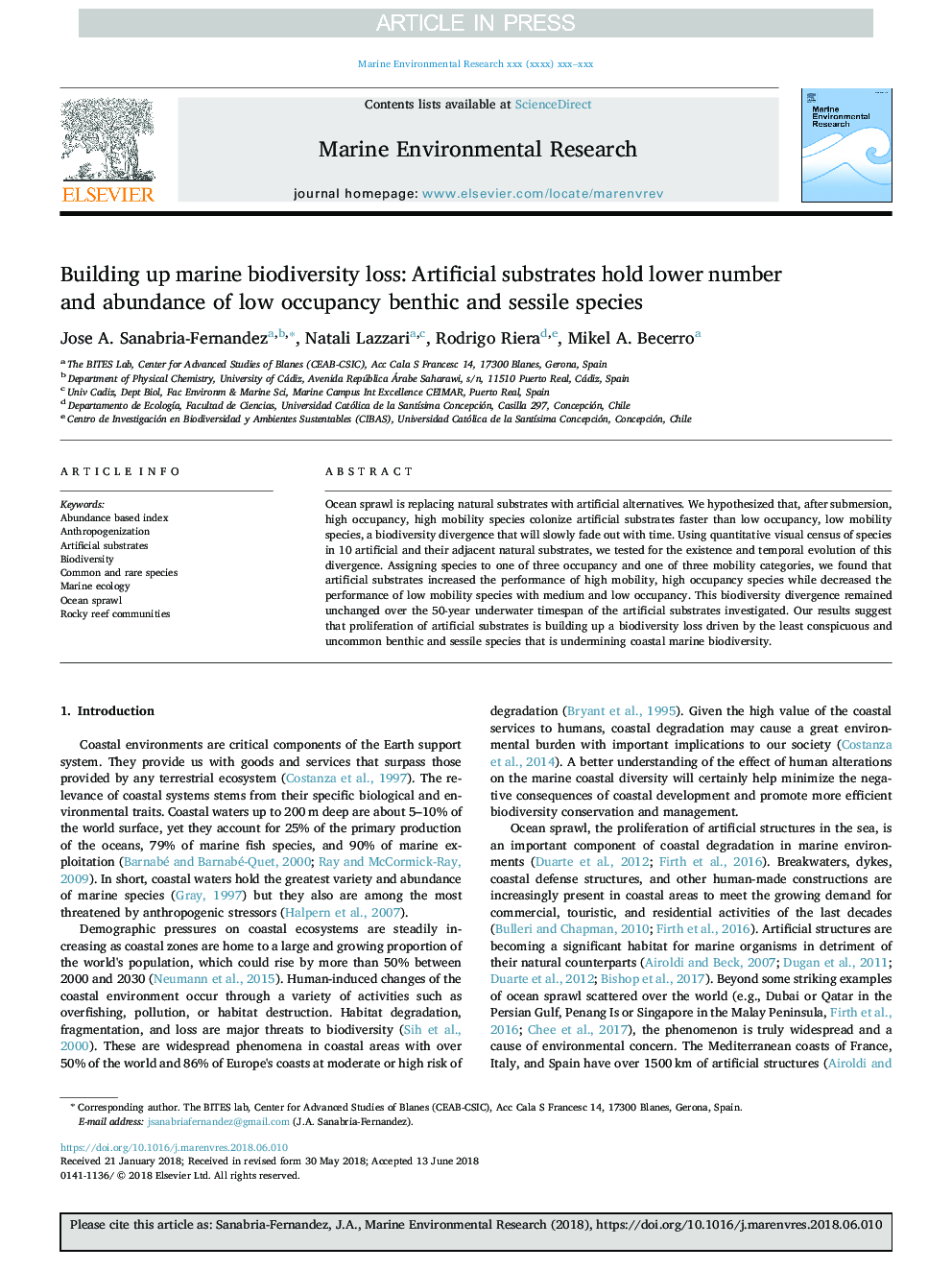| Article ID | Journal | Published Year | Pages | File Type |
|---|---|---|---|---|
| 10223909 | Marine Environmental Research | 2018 | 10 Pages |
Abstract
Ocean sprawl is replacing natural substrates with artificial alternatives. We hypothesized that, after submersion, high occupancy, high mobility species colonize artificial substrates faster than low occupancy, low mobility species, a biodiversity divergence that will slowly fade out with time. Using quantitative visual census of species in 10 artificial and their adjacent natural substrates, we tested for the existence and temporal evolution of this divergence. Assigning species to one of three occupancy and one of three mobility categories, we found that artificial substrates increased the performance of high mobility, high occupancy species while decreased the performance of low occupancy species with medium and low mobility. This biodiversity divergence remained unchanged over the 50-year underwater timespan of the artificial substrates investigated. Our results suggest that proliferation of artificial substrates is building up a biodiversity loss driven by the least conspicuous and uncommon benthic and sessile species that is undermining coastal marine biodiversity.
Related Topics
Physical Sciences and Engineering
Earth and Planetary Sciences
Oceanography
Authors
Jose A. Sanabria-Fernandez, Natali Lazzari, Rodrigo Riera, Mikel A. Becerro,
